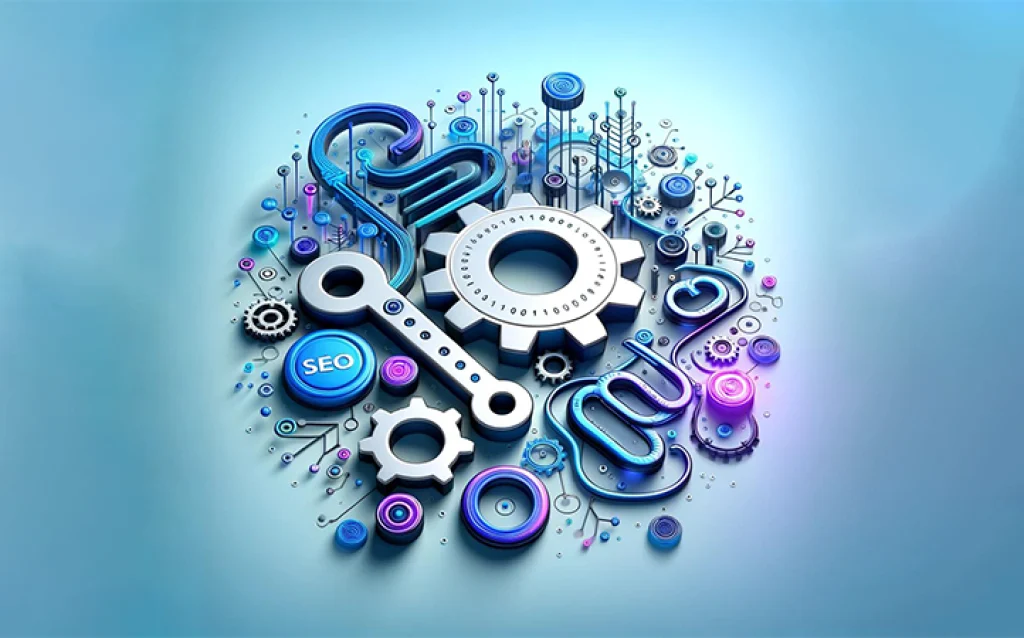Web scraping and web crawling are two distinct methods of collecting data from websites, though they’re often confused. Web crawling systematically discovers and indexes web pages by following links across the internet, while web scraping extracts specific data from targeted pages. Understanding their differences helps digital marketers choose the right approach for their data collection needs, whether that’s mapping website structures for SEO or gathering competitive intelligence.
Understanding web scraping and crawling fundamentals
When you’re working in digital marketing, you’ll often hear about web scraping and crawling as if they’re the same thing. But here’s the thing: they serve completely different purposes, and knowing which one to use can make or break your data strategy.
Think of it this way: if the internet were a massive library, crawling would be like walking through every aisle to create a map of where all the books are located. Scraping, on the other hand, would be like going directly to specific books and copying down particular quotes or information you need. Both are valuable, but you wouldn’t use a map when you need a specific quote, right?
For digital marketing professionals, this distinction matters because it affects everything from how you analyse competitors to how you optimise your own website. Whether you’re trying to understand your site’s structure for better crawl optimization or gathering pricing data from competitors, choosing the right method saves time and delivers better results.
What exactly is web crawling?
Web crawling is the systematic process of discovering and indexing web pages by following links from one page to another. It’s like sending out digital explorers that navigate through websites, mapping out their structure and understanding how different pages connect to each other.
When a crawler visits your website, it starts with a seed URL (usually your homepage) and then follows every link it finds. It reads the HTML, identifies all the hyperlinks, and adds them to its queue of pages to visit next. This process continues until the crawler has mapped out your entire website or reached its crawling limits.
Search engines like Google use crawlers (called Googlebot) to discover new content and update their index. But it’s not just search engines that benefit from crawling. As a digital marketer, you might use crawling to:
- Audit your website’s structure and identify broken links
- Discover all the pages on a competitor’s site
- Monitor changes to website architectures over time
- Find orphaned pages that aren’t linked from anywhere
The beauty of web crawling lies in its ability to give you a bird’s-eye view of entire websites. If you’re wondering about how to audit your blog content, crawling tools can help you understand your site’s overall structure before diving into specific page analyses.
What does web scraping involve?
Web scraping is all about precision. Instead of exploring entire websites, scrapers target specific data points on particular pages. They parse the HTML code to extract exactly what you’re looking for, whether that’s product prices, contact information, or customer reviews.
Here’s how it works: a scraper loads a web page, analyses its HTML structure, and pulls out the specific elements you’ve programmed it to find. For instance, if you’re monitoring competitor pricing, your scraper might look for elements with specific CSS classes that contain price information.
Common web scraping applications in digital marketing include:
- Extracting product details and prices for competitive analysis
- Gathering contact information for lead generation
- Collecting customer reviews and ratings
- Monitoring social media mentions and engagement metrics
- Tracking keyword rankings and SERP features
The targeted nature of scraping makes it incredibly efficient when you know exactly what data you need. However, it requires more technical setup than crawling because you need to understand the structure of each website you’re scraping from.
How do the purposes of scraping and crawling differ?
The fundamental difference between scraping and crawling comes down to their objectives. Crawling is about discovery and mapping, while scraping is about extraction and collection. This distinction shapes everything from the tools you use to the results you get.
Crawling serves these primary purposes:
- Discovering all accessible pages on a website
- Understanding site architecture and internal linking
- Identifying technical SEO issues
- Monitoring website changes and updates
Scraping, meanwhile, focuses on:
- Extracting specific data points for analysis
- Building databases of competitive information
- Automating data collection processes
- Creating real-time monitoring systems
In practice, these differences mean you’d use crawling when you need to understand a website’s structure or ensure search engines can properly index your content. You’d turn to scraping when you need specific data for market research, price monitoring, or content aggregation. As AI continues to transform digital marketing, understanding these distinctions becomes even more crucial. You might be interested in learning how to leverage AI for profitable ventures, where both crawling and scraping play important roles.
Which tools should you use for crawling versus scraping?
Choosing the right tool depends entirely on what you’re trying to achieve. Crawling tools and scraping tools are built with different capabilities, and using the wrong one is like trying to eat soup with a fork, possible, but not very effective.
Popular crawling tools include:
| Tool | Best For | Key Features |
|---|---|---|
| Screaming Frog | SEO audits | Desktop crawler, visual sitemaps, technical SEO analysis |
| DeepCrawl | Enterprise sites | Cloud-based, scheduled crawls, historical data |
| Sitebulb | Visual analysis | Interactive visualisations, detailed reports |
For web scraping, you’ll want different tools:
| Tool | Best For | Technical Level |
|---|---|---|
| Beautiful Soup | Python developers | High (coding required) |
| Scrapy | Large-scale projects | High (coding required) |
| Octoparse | Non-programmers | Low (visual interface) |
| ParseHub | Dynamic websites | Medium (some technical knowledge) |
When selecting tools, consider your technical expertise, budget, and scale of operations. Many marketers start with visual tools before moving to code-based solutions as their needs grow. Speaking of evolving needs, you might wonder whether AI will replace SEO professionals. The truth is, understanding tools like these will remain valuable regardless of how AI evolves.
Key takeaways for choosing between web scraping and crawling
Making the right choice between web scraping and crawling comes down to understanding your specific goals and the nature of the data you need. Both methods have their place in a comprehensive digital marketing strategy, and often, you’ll find yourself using both at different times.
Use crawling when you need to:
- Perform technical SEO audits
- Map website architectures
- Discover all pages on a domain
- Monitor site-wide changes
Choose scraping when you want to:
- Extract specific data points
- Monitor competitor pricing
- Build content databases
- Track specific metrics over time
Remember to always respect website terms of service and robots.txt files. Both crawling and scraping should be done ethically and responsibly. Consider the server load you’re creating and implement appropriate delays between requests.
As you develop your data collection strategy, think about how these tools fit into your broader digital marketing efforts. Whether you’re exploring AI-assisted link building strategies or diving into AI’s role in creative content, understanding the fundamentals of data collection will serve you well.
The digital landscape continues to evolve, but the need for accurate, timely data remains constant. By mastering both web crawling and scraping, you’ll be equipped to gather the insights that drive successful marketing campaigns. Start with your immediate needs, choose the appropriate method, and remember that the best approach often combines both techniques for comprehensive data intelligence. To learn more about our approach to SEO automation, we’re always here to help you navigate these technical waters.






